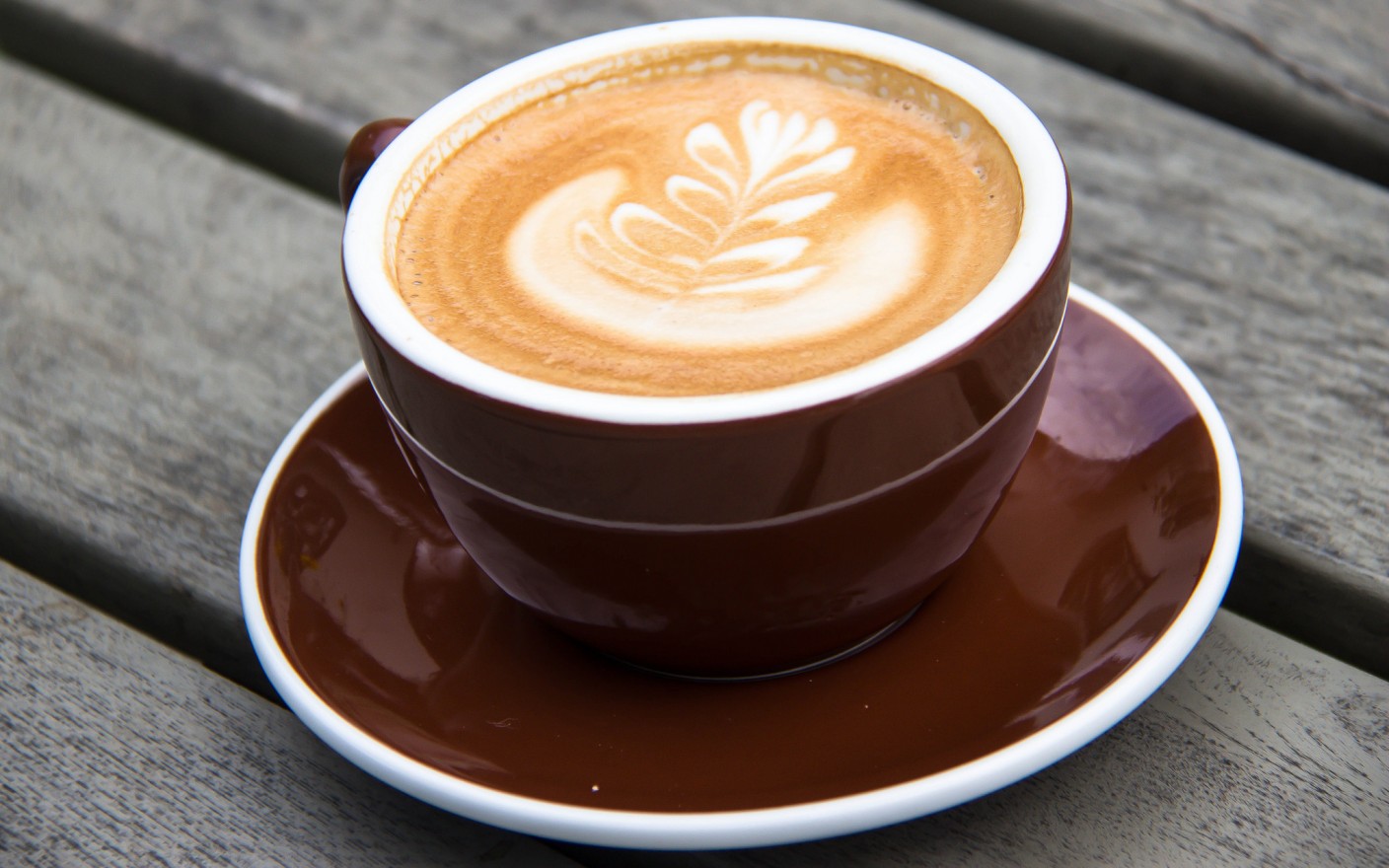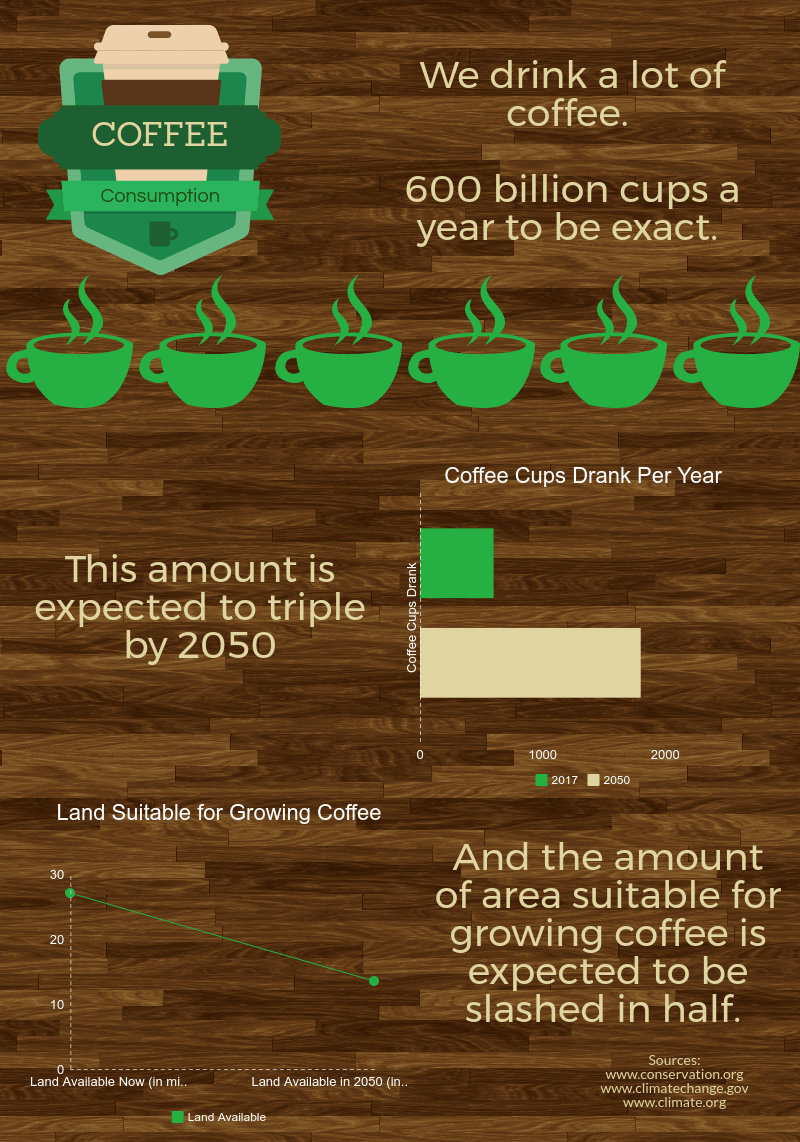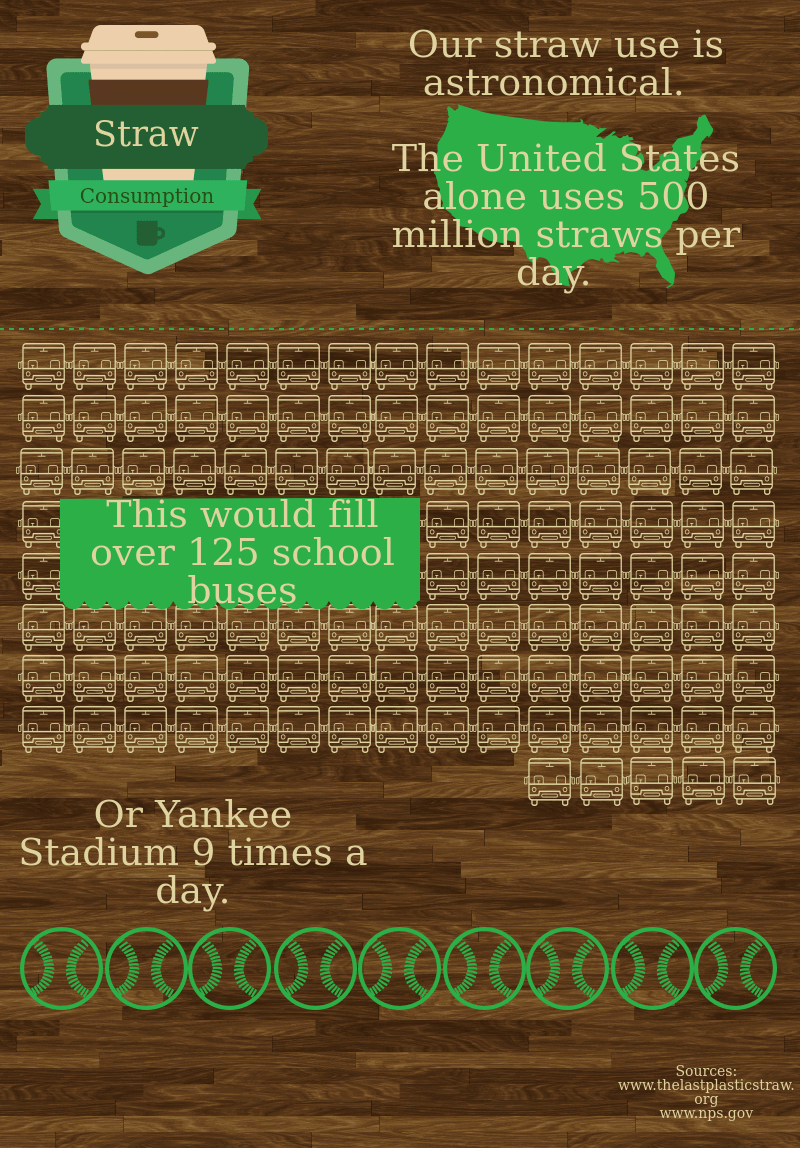
(Susanne Nilsson/Flickr)

(Susanne Nilsson/Flickr)
I’m known for drinking a lot of coffee, and I mean epic, Gilmore-Girls-proportions of coffee. Whether I’m pulling an all-nighter or secretly enjoying a Venti pumpkin spiced latte at Starbucks that I would never admit to ordering, I can seldom get through the day without a hit of caffeine. While millennials are known for their excessive Starbucks orders, they aren’t the only ones drinking coffee. Worldwide, we drink an obscene amount of coffee every year.

In addition to the land problem we have, when we drink SO much coffee, there are inevitably harmful by-products. If we want to preserve the cherished coffee-growing areas, we need to be more responsible for our Earth as a whole. If the climate keeps changing the way it’s going, by 2050, there’ll be half as much land that’s usable for growing coffee beans. If this happens, there’s no way we can make 1,800 billion cups of coffee a year. Change needs to happen, and it starts with your cup of joe. By modifying the way we drink coffee, we can cut down our carbon footprint and cut back on waste, which will in turn lead to a cleaner Earth. Trouble may be brewing for the future, and if we don’t take strong action sometime soon, we will have a coffee crisis on our hands. And it will be worse than when I found out that the salted caramel mocha Frappuccino is only sold seasonally.

Here are five things you can actually do to help prevent the doomsday scenario that is a world without coffee.
1. Use Reusable Coffee Cups

Instead of throwing out a one-use cup at the end of every visit, why not bring your own cup to your local coffee shop?
Some stores have programs where they sell a refillable ceramic mug, and others offer discounts when you bring your own. Bruegger’s Bagels has a Bottomless Mug Club, where they sell a mug every year for a flat rate and give free coffee refills for the year when you bring the mug to their store. Starbucks has a program where they offer ten cents off of your coffee if you bring in your own mug. Additionally, many other independent establishments have similar programs; you just have to ask.
2. Ditch the K-Cup

The Keurig machine and other single-serve brewing systems seemed like a great idea for the environment at first. While they may reduce the amount of coffee bought in foam cups in a coffee shop, they have an ugly by-product that is crowding landfills: the k-cup. What is it about the little plastic pods that has people making horror films about them? According to The Atlantic, Keurig sold 9.8 billion pods of coffee in 2014, which, if lined up, would circle the Earth more than 12 times. Because the vast majority are not recyclable or biodegradable, they hog up landfills.
Currently, Keurig plans to make k-cups completely recyclable by 2020. They released the first recyclable k-cups in 2016.
3. Lose the Straw (for those Frappuccinos)

Okay, so you might already know plastic straws aren’t the best for the environment. If you’re drinking an iced coffee or mixed coffee drink, chances are you don’t really even need a straw. It’s easy to forget to go straw-less, but sparing the straw does make a difference.
A little while back, I saw this video. I have to warn you, it’s a little graphic. If you’re queasy like me and couldn’t get through the whole thing, it is a video of rescuers prying a plastic straw out of a sea turtle’s nose. And if that isn’t sickening enough, check out some of these stats.

4. Buy Local or Fair Trade Coffee

No, don’t steal the coffee from the person standing next to you. Not that local. But there are local options, and if you can’t find coffee that’s grown locally in your area, odds are you can find coffee that’s roasted in your area. Buying locally means it takes less carbon in the form of gasoline to get the good stuff from the beans to your cup.
Buying Fairtrade Certified coffee is a good alternative because it ensures that the coffee you’re paying for meets sustainable farming standards, and also that the process of growing the coffee beans is fair to the workers.
Some examples of Fairtrade Certified brands are Amazon’s Happy Belly House Blend Organic Fair Trade Coffee, Cafe Altura’s Organic Instant Coffee and Seattle’s Best’s 6th Avenue Bistro Fair Trade Organic Coffee.
5. Reuse or Recycle Coffee Grounds

Depending on the kind of beans you’re using and how much of a coffee connoisseur you are, you may be able to get two uses out of your coffee grinds. If you prefer not to reuse them, you can re-purpose them to add to your fertilizer. Gardening Knowhow recommends adding coffee grinds to fertilizer to improve drainage, water retention and aeration. If you are without a garden, Reader’s Digest recommends putting a bowl of them in the freezer overnight to remove any nasty smells. You can find some of their other practical ideas for coffee grinds here.
The time is upon us. Whether you’re brewing a cup in your room or shouting your order at a busy barista across a counter, I ask you to act deliberately and with the future in mind. My ability to function during 8 a.m. classes is at stake.